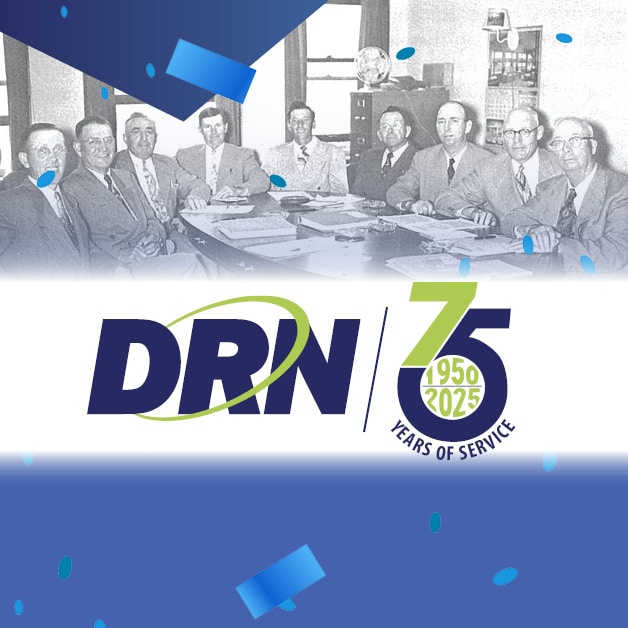DRN Celebrates 75th Anniversary

DRN is proud to announce the celebration of its 75th anniversary. In honor of this milestone, DRN will take you through its rich history, detailing the growth and setbacks faced over the past 75 years. Let’s start off with a fun fact: DRN is a marketing name for Dickey Rural Telephone Cooperative (DRTC)!
The establishment of DRN began with an idea: a group of people interested in organizing a telephone cooperative in Dickey County. The first meeting was held on July 26, 1950, at the Dickey County Courthouse in Ellendale. Thirty-eight people attended the meeting that evening, and the first board of directors was elected. B.L. Nelson served as chairman, Glenn Coleman as vice chairman, and John A. Viken as secretary-treasurer. The other members of the committee were Albert Hauck, Matt German, Earl Larson, and Stanley Johnson.
Headquarters were first established in Ellendale, ND, and the first official meeting at headquarters took place on August 21, 1951. A month later, members Walter Scott and C.W. Holmes were added to the board of directors. In October of the same year, there were two changes to the board: Fred Klipfel and Raymond Burkle were elected, replacing Earl Larson and Matt German.
The first loan to DRN was announced by the REA in July 1951, making DRN the first recipient of an REA telephone loan in North Dakota. Over the next year, DRN purchased 10 telephone companies in the area. The subscriber number started off slowly for the cooperative and slowed even more after having to increase rates in 1957. Following these slow couple of years, between 1958 and 1965, weather-related incidents caused major setbacks to DRN, including multiple sleet storms that caused roughly $158,000 in damage from approximately 1,500 broken telephone poles.
The first significant growth was experienced in 1963 when the cooperative gained 152 subscribers with the addition of the Fort Ransom exchange. In 1970, the cooperative began upgrading its entire system to buried plants, a shift fueled by the damage above-ground telephone lines faced in sleet storms. By 1973, 15 of the cooperative’s 16 exchanges had been converted.
At the time, the territory spanned approximately 120 miles east to west and 70 miles north to south. DRN continued making improvements, and property was purchased for the new headquarters building.
News articles will continue to scroll through DRN’s history throughout the various decades up to 2025 over the next months. For more information about DRN, visit the 75th Anniversary page. DRN can be reached at 701-344-5000.